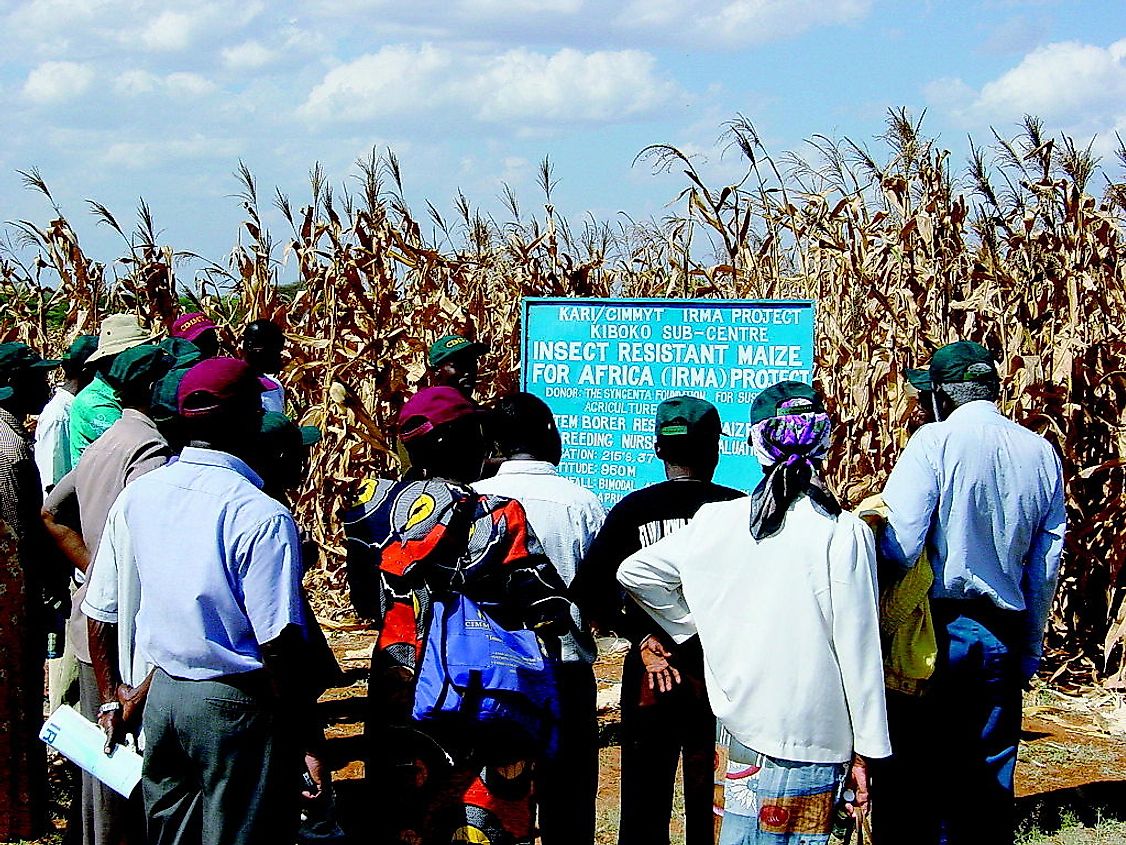Global Distribution Of Biotech Crop Cultivation

Biotech crops are plants with DNA that have been modified through the genetic engineering technology with the aim of introducing new characteristics to the plant which are not naturally present. Genetic engineering technique aims at developing crops that are resistant to diseases, pests, and extreme environmental conditions while reducing spoilage and improving nutrients of the produce. The crops are sometimes referred to as Genetically Modified Crops or simply as GMCs. Farmers who have adopted GMC as a means of crop production have realized approximately 22% increase in crop yield while pesticide use has reduced significantly. High yield and low cost of pesticide have increased farm profitability. Because of improved profit margins, farmers in most countries have adopted biotech crop farming. Some of the leading countries in GMCs farming include US, Brazil, Argentina, and India among others.
Global Distribution Of Biotech Crop Cultivation
USA
US Department of Agriculture reported that an average of 70.1 million hectares of land was under genetically modified crops in 2013. The figure reported as under GMCs was considered the highest in the whole world. Corn was reported planted covering an average of 93% of all corn planted while soybeans covered 96% planted area while cotton covered up to 93% of the area planted. Genetically modified maize, soybeans, and cotton all carried herbicide-tolerant trait with both maize and cotton carrying additional insect tolerant traits.
Brazil
Brazil is the second largest GMCs producer in the world after the US. About 44.2 million hectares of land in Brazil is planted with GMCs with soybeans, maize and cotton dominating the list of genetically modified crops planted. These GMCs are mostly herbicide tolerant and take a short time to mature. GMC farming in Brazil has seen the country close its door to US GMCs import because Brazil in now one of the leading GMO developers in the world
Argentina
GMCs technology in Argentina has encountered a lot of resistance despite its significant growth. Argentina has been GMO point of entry to the Southern Cone.24.5 million hectares of Argentina’s land has been set aside for GMCs with the drought-resistant soybeans being the popular GMC. The drought-resistant soybean was developed in Argentina and is now being used worldwide. Transgenetic potatoes are also common GM plants that have been approved by the government. Herbicide-tolerant and fast growing cotton and maize are also planted in most parts of the Argentinean farms.
India
The Indian government is slowly opening its door to GM crops after opposing it for many years. The perceived shortage of food in India is thought to be the reason behind India’s acceptance to GM farming. Currently, a total of 11.6 million hectares of land is under GM agriculture in India with cotton being the only favorite GMC planted.
Controversies Associated With Biotech Crop Farming
Biotech crop farming has a lot of controversies and has faced resistance in the past. In fact, some of the governments have banned all GMO crops in their countries. The controversies mainly involve government regulations, biotechnology companies, and scientists. Some of the areas of concern include the health of the consumer, impact on the environment, impact on farmers, and government regulations. Some of the advocacy groups like Center for Food Safety have called for a thorough examination of the risks associated with GM food before it is allowed for consumption even though scientists have persisted that GMO food poses no threat to life.
Global Distribution Of Biotech Crop Cultivation
| Rank | Country | Global Area of Biotech Crops (in million hectares), 2015 |
|---|---|---|
| 1 | USA | 70.90 |
| 2 | Brazil | 44.20 |
| 3 | Argentina | 24.50 |
| 4 | India | 11.60 |
| 5 | Canada | 11.00 |
| 6 | China | 3.70 |
| 7 | Paraguay | 3.60 |
| 8 | Pakistan | 2.90 |
| 9 | South Africa | 2.30 |
| 10 | Uruguay | 1.40 |







